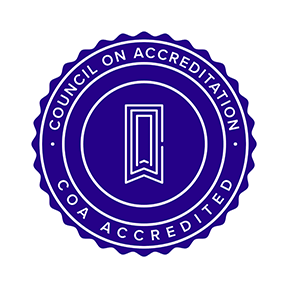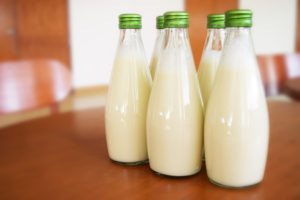

The most common argument I hear against consuming milk is, “Humans are the only species that drinks the milk of another mammal.” This is supposed to mean that it is somehow unnatural to drink milk at all. The logic from that sentence could reduce all of our meals to raw food though since I don’t see a lot of other species cooking their food… or shopping for food for that matter.
So what’s the deal with milk? Why do we consume it? For centuries milk has been a part of some cultures diets. Hippocrates and other early physicians used milk for the treatment of illnesses. In the 1920s Dr. J. E. Crewe of the Mayo Foundation used a diet of milk to cure tuberculosis (TB), edema, heart failure, high blood pressure, prostate disease, urinary tract infections, diabetes, kidney disease, chronic fatigue and obesity. Even today, milk therapy is provided in many German hospitals.
We have all heard how important calcium is for the bones and preventing osteoporosis. Calcium is only part of the equation. For healthy bones we need the proper balance of calcium, phosphorus and magnesium. All three are minerals, and minerals cannot be manufactured in the body; we have to ingest them. We also need to have the proper amount of hydrochloric acid in the stomach to absorb calcium. Once absorbed, essential fatty acids are needed to carry calcium across the cell membranes and tissues. Vitamin D helps absorption through the gastrointestinal tract. Finally, other trace minerals like potassium, manganese, boron, copper and zinc are needed. Given all of these co-factors for calcium absorption guess which food has all of them included? Milk.

Here in the US, we see milk vilified as inhumane and unhealthful. But we still list as a necessary food group for children. We are also seeing a huge push to plant-based milks like nut milks, coconut milk and vegetable milks. These plant-based milks are being touted for higher nutritional values and “safer” for our hearts and arteries. In my practice, I never recommend processed dairy, and never low, non or skim products; only full-fat dairy. This would include any pasteurized or homogenized milk. In some cases, I think full-fat yogurt and cheese from grass-fed cows is acceptable since it is cultured and fermented the enzymes that are killed during the pasteurization are put back in. For my own family, we have raw dairy in our fridge. A Campaign for Real Milk has great information if you want to learn more about the benefits of live milk. If you are a reader or into scientific experiments Francis Pottenger’s Cat Studies are fascinating and you can read about them in his book.
For those who are lactose-intolerant or have allergies dairy is a no-go. In those cases I recommend meat stock (basically a short cook bone broth), children will typically drink warm chicken stock with no complaints. Stock can be used in soup, to cook vegetables and rice instead of water. For other options homemade almond or coconut milk are the only others I recommend. And these two in moderation! Nuts are rich in Omega-6 fatty acids, which while beneficial needs to be in balance with Omega-3 fatty acids. Nuts are meant to be a small part of our overall diet. Processed nut milks at the store are full of additives and very little nuts. It is so easy to make your own at home. The website Tasty Yummies has a super helpful tutorial for a variety of flavors and nuts. For those with nut allergies, there is one for coconut milk (and yogurt).
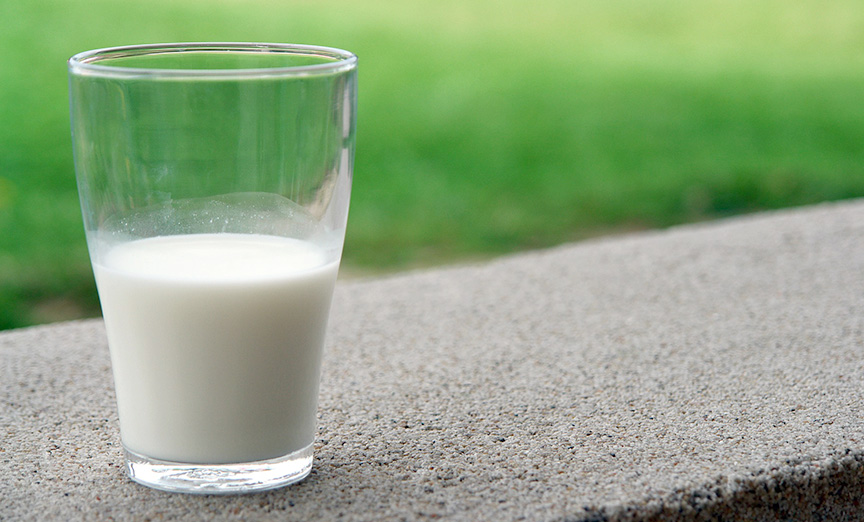
Recently, I came across a new plant-based, vegan “milk” that is supposed to be amazingly healthful. It has a pretty label with impressive-sounding, better-than-dairy claims on the front. I saw a few of my friends buying it for their children, so I looked up the ingredients: Peas, Organic Sunflower Oil, Organic Cane Sugar, Algal Oil, Water, Vitamin A Palmitate, Vitamin D2, Calcium Phosphate, Potassium Phosphate, Sunflower Lecithin, Natural Flavors, Sea Salt, Organic Guar Gum, Gellan Gum.
I could probably write pages on each of these ingredients, but to be brief, water and sea salt are the only beneficial ingredients I see. There are a few benign and a few slightly more concerning. Vitamin D2 is regularly used as an additive, but it is not nearly as effective as D3. Added Vitamin D2 in foods can lead to toxic amounts in the blood. Natural Flavors, can refer to almost anything so it is hard to be precise here. I always think that if they wanted you to know what it was they would list it. No one is scared of a little vanilla flavor. Gums are used as a thickener, are very high in fiber and may cause bloating, gas, diarrhea and in extreme cases bowel obstruction. The gums are currently listed on the Generally Recognized As Safe (GRAS) list. To get an ingredient on the list you have your own experts write a report and submit to the FDA detailing how much is safe. It is a voluntary mechanism to inform the FDA of a determination that the use of a substance is GRAS, rather than petition the FDA to affirm that the substance is GRAS. The FDA rarely asks any questions of these submissions. So it is then left up to the consumer to keep their consumption within those levels.
With that information, what sounds more healthful to you—the food that contains all of the necessary nutrients to digest and absorb the minerals in it? Or the processed, manufactured chemical food product?

“I believe that it’s time that [parents] come to realize that no one except your family is out there protecting you and your child. No one. Not the government, not the food industry. …As soon as you recognize this simple but important fact of life, you’ll be able to step back and make much, much better decisions about your health and your family’s health.” –Jolette Calabrese
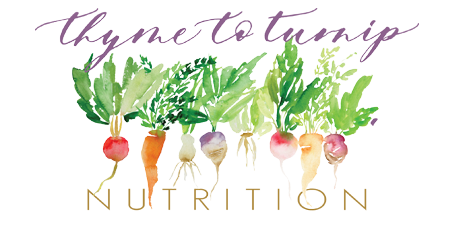
Note: The information found in this blog post is for educational and informational purposes only. The opinions of Brynn D’Avello/Thyme to Turnip do not necessarily reflect the views of Trinity Youth Services. This blog post is not intended to diagnose, treat, cure, or prevent any disease or illness, nor act as a substitute for medical treatment or advice. Please consult with your healthcare provider before implementing any dietary and/or lifestyle modifications.
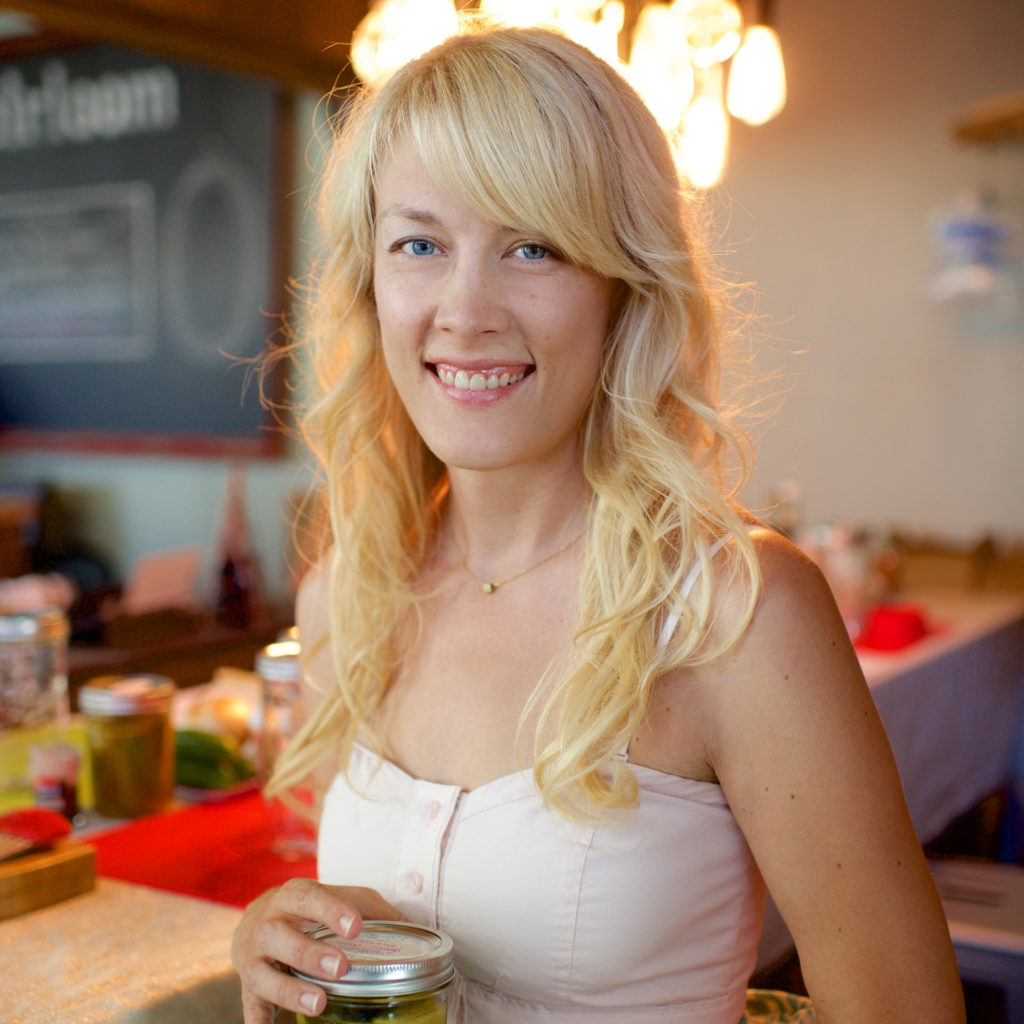
Bynn D’Avello, Nutritional Therapy Practitioner
Brynn is a certified Nutritional Therapy Practitioner and owns Thyme To Turnip Nutrition in Claremont, CA. Brynn’s passion is working with families to build healthy foundations. She helps couples prepare their bodies for conception, works with parents to support healthy pregnancies, and nourishing their babies and children. Brynn & her husband Mike have a blended family they commonly describe as “Yours, Mine and Ours,” with 3 boys between them when they married; they had a baby girl together 2 years ago. Their nutrition journey with one son’s placement on the Autism spectrum in 2011, and they have learned how important food is to maintaining optimal health not just for their son with Autism, but also for the entire family. Brynn understands how daunting it can seem to switch to a nutrient-dense diet in today’s busy world of the working family.
Tel: (909) 747-7769 | Email: brynn@thyme2turnip.com | Website: www.thymetoturnip.com


As a busy mom, meal planning is a task that is never complete. Some days it doesn’t feel like I can even get the kitchen cleaned before a tiny human is telling me they are STARVING (picture them laying on the floor clutching my ankle). We also have a running joke in the house that there’s no dinner on Sundays. During the week we usually stick to quick prep breakfasts; oatmeal, fried eggs, or make-ahead-breakfast-muffins warmed up. Sundays are lazy days. Big breakfasts are finished around noon, and then I’ll cook a big meal that falls somewhere between normal lunch and dinner times. If you get hungry again later then you are on your own to forage for snacks and leftovers.
I would like to imagine that one day I am going to get the hang of having my pretty meal plan chalkboard all filled out for the week, with all of the necessary ingredients picked up in one shopping trip, but as of right now, I am planning one meal at a time. Part of my reluctance to sit down and plan is I depend a lot on what I am craving that day. In the past attempts to plan, shop and cook are thwarted by a long day at work where I don’t feel like cooking at all when I get home, or beef stroganoff not sounding as good as pan-seared scallops. It winds up being a waste of money when produce I meant to use goes bad. Here’s what works for me:
SHOP YOUR LOCAL STORE ADS
My store has a new ad every Wednesday. I loosely plan a few dinners once I’ve checked through the sheet for sales. The cool thing about the store I shop at is that Wednesday is double ad day; everything from the previous week is still on sale along with all the new sales. I believe in variety for nutrition’s sake, but if ground beef is 60% off, I know I will be getting creative with the beef recipes for that week. We can mix up the veggies and snacks to round out our nutrients.
STICK TO THE BASICS
As I mentioned before, weekday breakfasts are routine around here. So are week-night dinners. For my stepsons’ benefit their weekly dinner at our house is always Taco Tuesday. The rest of the week follows a general guideline of meat+veggie2. When I’m especially brilliant all of it gets baked on a jumbo sheet pan in the oven for an easy cleanup.
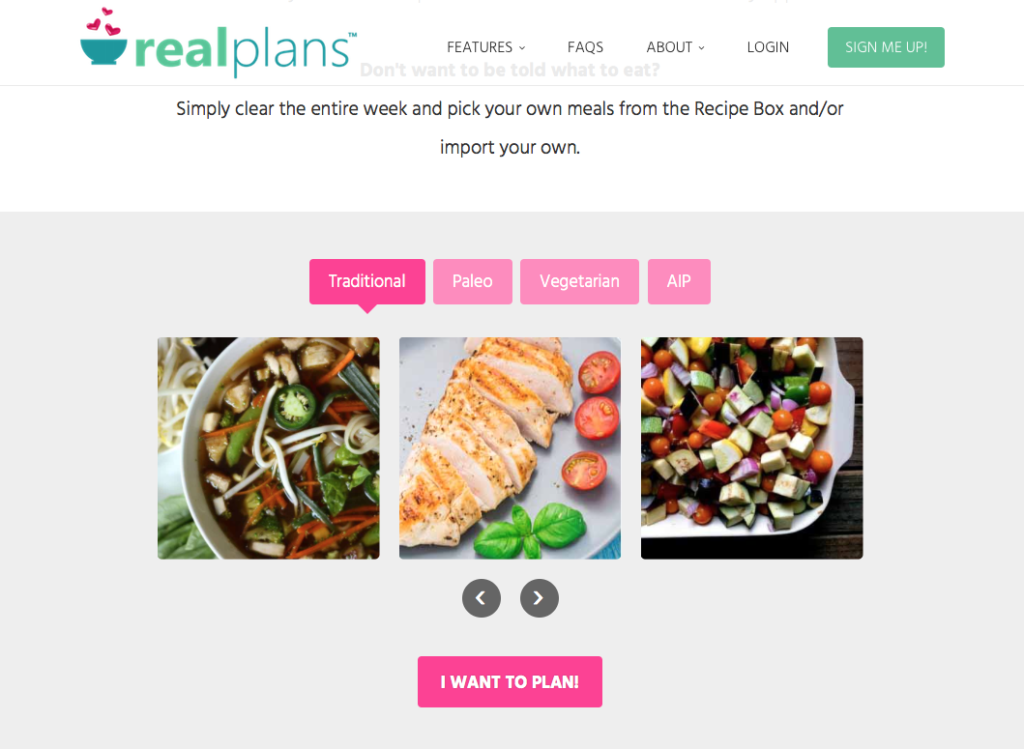
PUT YOUR APP INTO IT
I have 2 apps I use on the regular. The Real Plans app is a great tool for meal ideas, and a very easy planner if you are good at that. I will plan my week on Wednesdays based on my grocery deals, but if I skip a meal I can easily flick it to another day on the planner. It also has plugins from some of the tastiest cookbooks around: PaleOMG, NomNomPaleo, Well-Fed, and The Paleo Mom to name a few. This a subscription service, but they offer a 30-day money back guarantee if it’s not for you.
The other app I swear by is the ShopShop app. This one is a free grocery list keeper. It comes in handy every day when I am out and think of something I need for dinner. I have multiple lists set up based on the store I like to use for each item. It’s also really nice to share if my husband is going to the store for me.
FARM IT OUT
If Amazon were a person I would vote it to be President. I have a steady stream of Prime deliveries to my house ranging from diapers, to groceries, to books, to goofy gag gifts. Now that Amazon Fresh is available in my area the bright green totes are also making an appearance. For hard-to-find items, or for weeks when I am swamped with other tasks this is one less trip to the grocery store with a crabby toddler that demands to eat the blueberries straight out of the carton before we get to the register.
There are also a ton of meal prep delivery boxes now as well. Our favorite is Sunbasket because they have family friendly options, simple ingredients and they are super easy to make. The ingredients are all sourced here in California, and the farmers are organic and sustainable, which makes my little heart beat a happy tune.
USE THE POWER OF THE FORCE… OF PINTEREST
I know, I know. Pinterest is a black hole, you jump on to find an idea for dinner and pretty soon you’re planning an add-on to your dream house/farm with the designer chicken coup in the backyard. This can be a great tool to save those ideas you come across or freshen up your meal calendar. If you need a place to start for ideas for what to feed your family and kids here’s a board I keep the fun food on: Snacks & Meals For Littles.
Unfortunately for me, there is more madness than method to the way we plan. I could blame the four kids and two business we run, but in the spirit of the New Year, it’s really just my personality. I love food, and never want to force myself to eat something I would prefer to make another day.
 Note: The information found in this blog post is for educational and informational purposes only. The opinions of Brynn D’Avello/Thyme to Turnip do not necessarily reflect the views of Trinity Youth Services. This blog post is not intended to diagnose, treat, cure, or prevent any disease or illness, nor act as a substitute for medical treatment or advice. Please consult with your healthcare provider before implementing any dietary and/or lifestyle modifications.
Note: The information found in this blog post is for educational and informational purposes only. The opinions of Brynn D’Avello/Thyme to Turnip do not necessarily reflect the views of Trinity Youth Services. This blog post is not intended to diagnose, treat, cure, or prevent any disease or illness, nor act as a substitute for medical treatment or advice. Please consult with your healthcare provider before implementing any dietary and/or lifestyle modifications.

Bynn D’Avello, Nutritional Therapy Practitioner
Brynn is a certified Nutritional Therapy Practitioner and owns Thyme To Turnip Nutrition in Claremont, CA. Brynn’s passion is working with families to build healthy foundations. She helps couples prepare their bodies for conception, works with parents to support healthy pregnancies, and nourishing their babies and children. Brynn & her husband Mike have a blended family they commonly describe as “Yours, Mine and Ours,” with 3 boys between them when they married; they had a baby girl together 2 years ago. Their nutrition journey with one son’s placement on the Autism spectrum in 2011, and they have learned how important food is to maintaining optimal health not just for their son with Autism, but also for the entire family. Brynn understands how daunting it can seem to switch to a nutrient-dense diet in today’s busy world of the working family.
Tel: (909) 747-7769 | Email: Brynn@thyme2turnip.com | Website: www.thymetoturnip.com


